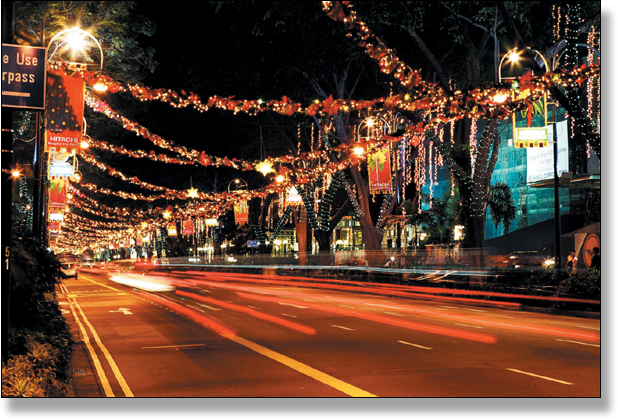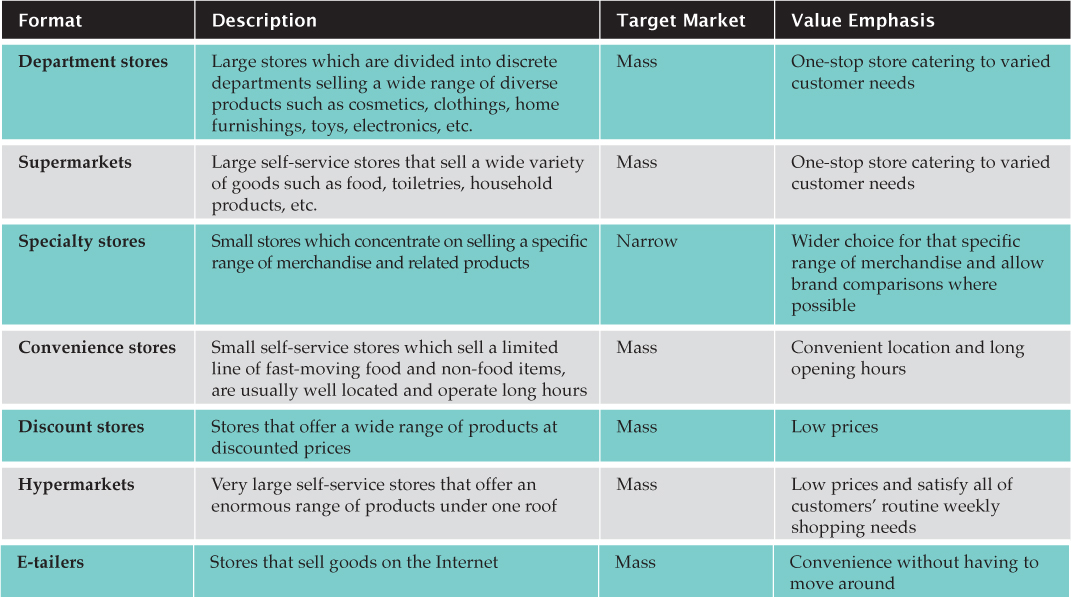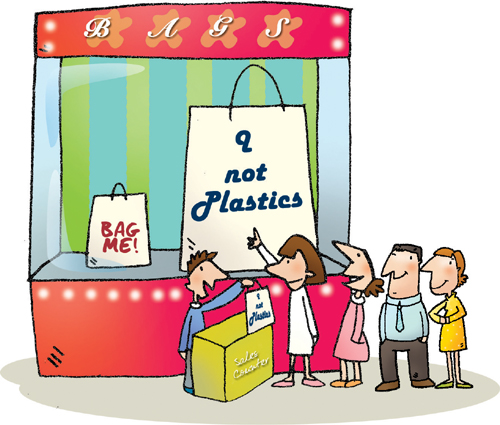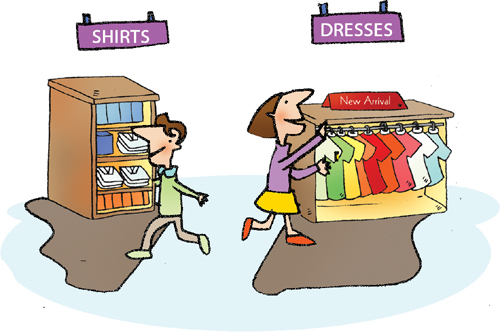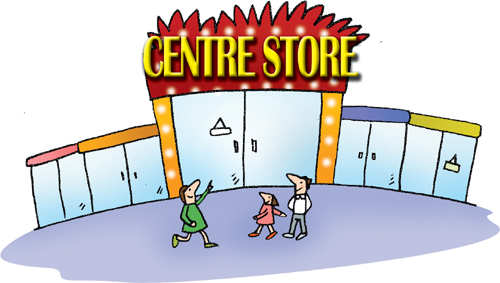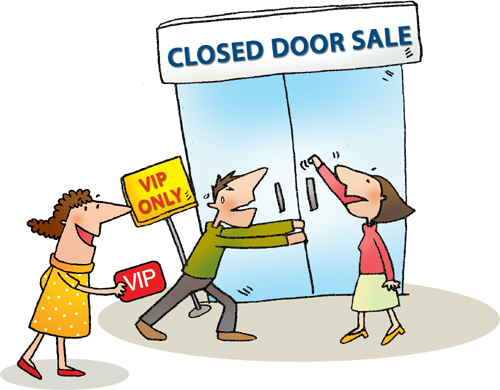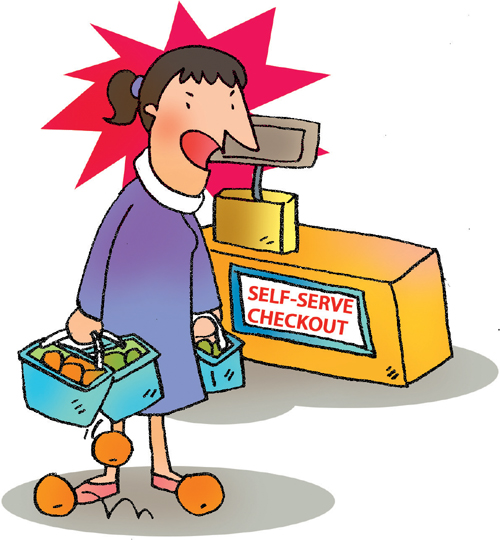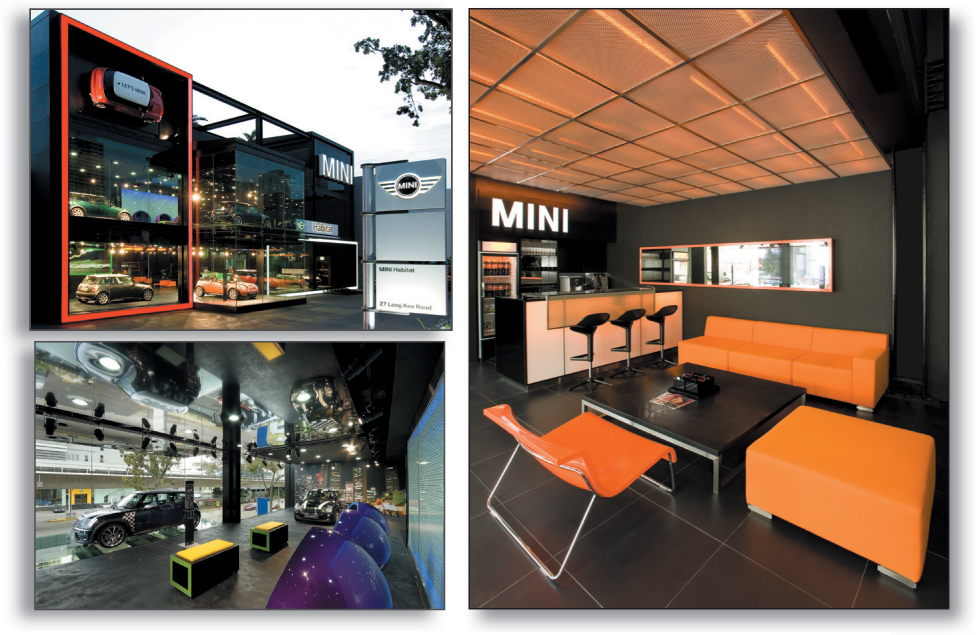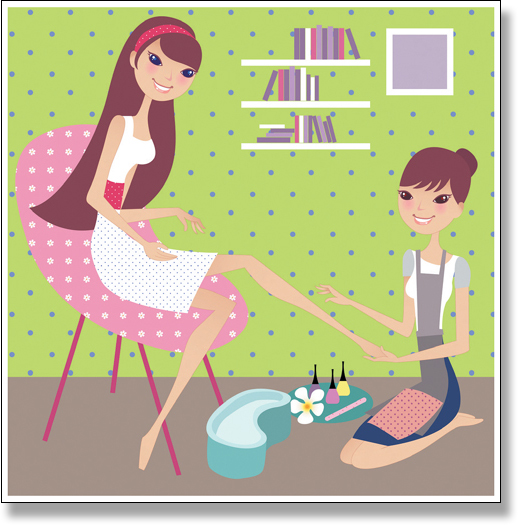Chapter 1. Welcome to the World of Retailing

Have you ever thought beyond shopping at your favourite store to a business or a career in retail?
Retail is a big business.
In terms of sales volume and number of employees, retailing is one of the largest sectors of most economies. This is hardly surprising as it includes almost everything from haberdashery and home-ware to clothes, food and electrical goods and many others, making the list of retailers practically endless.
What is Retailing?
Retailing includes all the activities involved in selling products and/or services to the final consumer. It covers diverse products such as apparels, footwear, financial services and leisure.
There are two types of retailers: store retailers and non-store retailers.
Store retailers usually operate from a fixed location and serve walk-in customers. Examples of store retailers that sell products are Robinsons, Takashimaya, Giant, Carrefour, Toys ‘R’ Us, etc. Examples of store retailers that sell services are dentists, hair salons, etc.
Non-store retailers reach out to customers at their homes or offices by:
• Electronic or online formats (e.g. books retailer – Amazon.com)
• Catalogues or mail order (e.g. clothing retailer – Lands’ end)
• Door-to-door selling (i.e. selling by knocking at consumers’ home)

“Hello! Is anyone home?”
• Telemarketing (i.e. selling of goods or services by phone)
• Television or radio (i.e. selling of goods or services via some advertisements to encourage consumers to call in to place an order)
• Vending machines (i.e. selling of goods or services by a machine)
E-tailing is a term that is used for retail businesses that utilise the Internet or other electronic formats for their consumer transactions.
Today, many retailers sell their products and services through multiple formats and channels. They not only sell through their physical store but also offer customers the convenience of buying selected products through the Internet.
Why is Retailing Important?
Retailers are an important link in the channel of distribution. A typical channel of distribution consists of a manufacturer, a distributor (or wholesaler or middleman) and a retailer. The retailer is the final link between consumers and manufacturers.
Retailers add value to products by making the products available to the consumer at the right place, right time and right price.
Christmas light up at Orchard Road by Singapore Tourism Board to promote shopping
(courtesy of Kingsmen Creatives Ltd)
In other words, the retailers add value to the products by:
• Ensuring the right products are bought to meet the needs of the customers
• Displaying the products for customers to touch and feel before they make a purchase decision
• Allowing the customers to buy in individual or multiple units
• Making available sales associates to demonstrate the products or answer any product queries
• Selling the product at a competitive price
• Allowing customers to exchange or refund a product that is not suitable
• Offering other personalised services such as delivery, gift wrapping, repairs, etc.
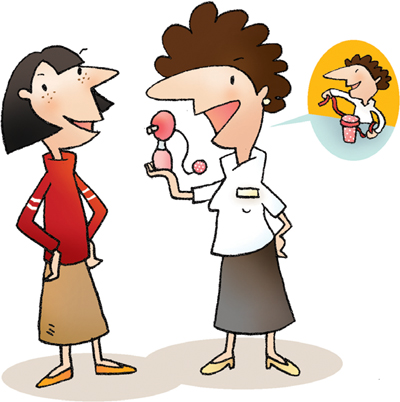
“Can I wrap this up for you?”
Functions of Retailers
The retailer performs five basic functions to facilitate the transaction between the retailer and the customer.
1. Merchandising, a process which includes the purchase of an appropriate assortment of products and to ensure the profitable sale of these products.
2. Operations, also known as store management, includes activities such as store maintenance, receipt and distribution of merchandise, as well as offer sales-support activities and customer service.
3. Promotions, include all activities that concern with communicating the retailer’s message to the public through advertising, displays, publicity, public relations, special events and promotional activities of the store.
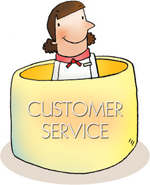
4. Control, which deals with the financial aspects of the business, that is, accounting procedures, employees’ payroll, sales tallies, customer and supplier bills.
5. Personnel, which involves employee selection, training, advancement and welfare.
All the above functions performed by retailers help to increase the value of the goods and services they sell to the consumers and facilitate the distribution of these products and services for those who produce them. The value created from these functions includes providing assortment of products, selling in single or smaller quantities, keeping stocks and providing customer services.
Major Formats of Retailing
A retail format is the overall appearance or impression of a store as it is presented to its customers. It includes the external look and internal layout, the range of products offered and the pricing approach.
The table on page 8 shows the major types of retail stores by product line.
Concerns of Retailers
Today’s potential customer is most likely a savvy shopper with a keen eye for price, service and convenience. They are more sophisticated and more demanding. As markets become more competitive, customers’ demands for quality product and service increase.
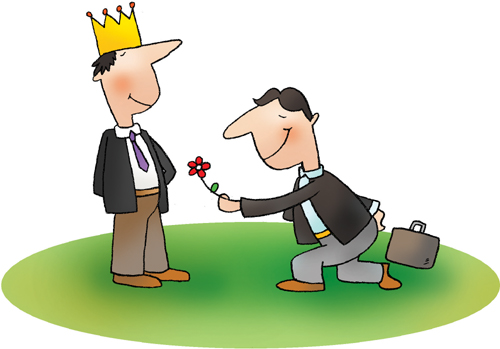
“The customer is king”.
As a result,
Delivering a unique in-store experience is a key goal for retailers today.
The key retail issues faced by retailers in order to achieve this goal include:
MINI Habitat – Exterior facade, interior design and customer service
(courtesy of Kingsmen Creatives Ltd)
The above approaches will be discussed in detail in the next few chapters.
The Future of Retailing
Retail is an extraordinary business, with an ever-shifting landscape. Many retail markets in the world have been particularly eventful in recent years, with increasing competition, margin pressure, and greater merger and acquisition activity.
Many people have asked: “Will store retailers survive in the near future with the presence of online retailers?” Some manufacturers have also joined in the competition by taking over the retail function themselves. They may not set up a store but they sell the goods over the Internet.
So, what is the future for store retailers?
Store retailers will continue to exist especially those retailers who offer personal services like hair salons, optical, medical and dental care, etc. Personal services require one-to-one and face-to-face interaction.
While consumers love to find the product information themselves via the Internet, shopping is still their favourite past time. Consumers will still want to have the opportunity to see, touch, feel or try out the products before they make any buying decision.
Today’s shoppers want a total customer experience which includes superior products that meet their needs, as well as retailers who treat them with respect, connect with them emotionally, and offer fair prices and convenience. Showing respect for customers not only includes having cheerful and motivated sales associates to serve them but also includes having a clear walkway, an organised store with appropriate signage and competitive prices.
However, the slowdown in population growth, greater competition and newer types of retailers, changing consumer lifestyle and spending patterns, and rising costs mean that retailers can no longer enjoy sales and profit growth through natural expansion in current and new markets.
Retailers of the future will have to choose their target segments carefully and position themselves strongly. Essentially, retailers can no longer continuously use the same successful formula to run their businesses. The need to keep up with the pace of change, as well as new developments in technology, simply increases the pressure on retailers to remain one step ahead of the competition.
To remain successful, retailers must keep adapting.

